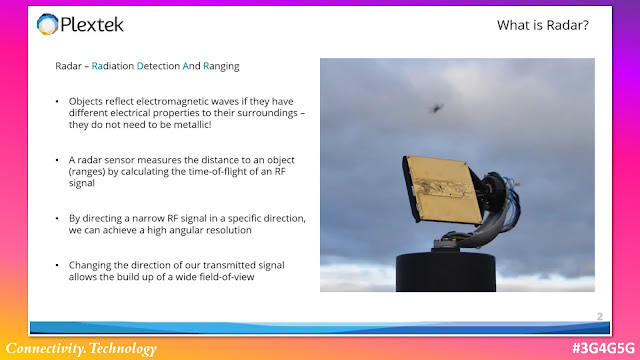Radio (or Radiation) Detection and Ranging, a.k.a. RADAR is a detection system that uses radio waves to determine the distance (ranging), angle, and radial velocity of objects relative to the site. The modern uses of radar are highly diverse, including air and terrestrial traffic control, radar astronomy, air-defense systems, antimissile systems, marine radars to locate landmarks and other ships, aircraft anti-collision systems, ocean surveillance systems, outer space surveillance and rendezvous systems, meteorological precipitation monitoring, altimetry and flight control systems, guided missile target locating systems, self-driving cars, and ground-penetrating radar for geological observations.
Radar is an important sensor in the autonomous cars. Typically, an autonomous car will have Lidar to scan the environment, Radar to identify the objects and Sonar to hear the objects. In our video of Tesla Model 3, we saw that the Forward-looking Radar is the primary sensor used to detect the vehicle's surroundings, along with the front-facing cameras. It’s used by Autopilot to see up to 160m ahead of the car, through "sand, snow, fog--almost anything," according to Elon Musk.
In a new video, engineer James Henderson from Plextek provides an Introduction to Radar Systems. Plextek has a long heritage in the development of optimal RF solutions specifically designed to meet the needs of high-performance radar and communication applications. They’ve built their business on radar & communications technology, and offer design support throughout the product lifecycle. This includes specifying the most suitable radar technology or designing a bespoke system through to product approvals and manufacturing.
The video covers the following topics:
- What is Radar?
- Pulsed Radar
- Radar Beam Scanning Techniques
- Mechanical Scanning Example
- Passive Electronically Scanned Radar Example
- Millimeter Wave μ-Radar
- Ubiquitous/MIMO Radar Approach
- SAR – Synthetic Aperture Radar
Related Posts:
- 3G4G: Vehicle to Everything (V2X)
- Connectivity Technology Blog: Introduction to Connected and Autonomous Vehicles (CAVs)
- The 3G4G Blog: An Introduction to Vehicle to Everything (V2X) and Cellular V2X (C-V2X)
- Free 6G Training: 6G Localization and Sensing – Technologies, Opportunities and Challenges

Comments
Post a Comment